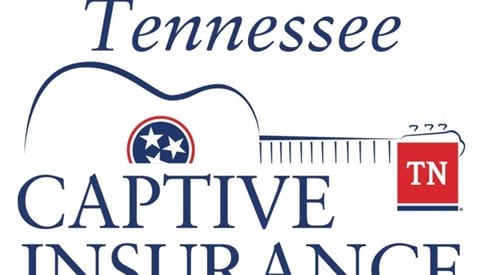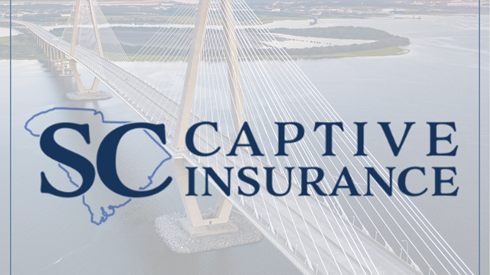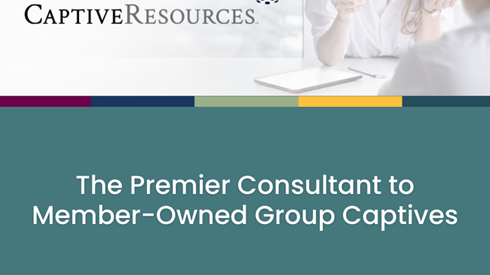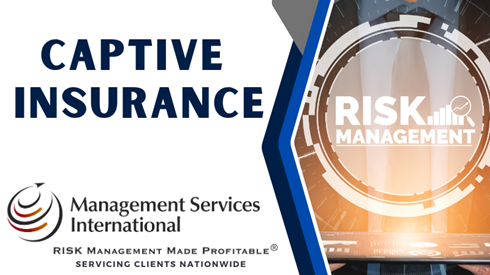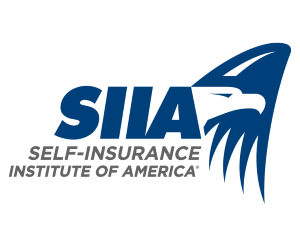The Expanding Role of Captives in Today's Changing Risk Market

Alex Wright | November 26, 2025

Captives are a key tool in the commercial insurance marketplace for addressing unique and complex risks. They offer an ideal solution for hard-to-insure risks or situations where coverage is difficult to obtain due to policy gaps, exclusions, or prohibitive costs through traditional insurance. Their adoption has only accelerated amid a hardening and volatile traditional market coupled with rising inflation.
A captive insurer is an insurance company wholly owned and controlled by its insureds. Its primary purpose is to insure its owners' risks, allowing them to better manage exposures, control insurance costs, and potentially derive underwriting profits and tax benefits.
"The best candidates for forming a captive are organizations with a strong loss history and well-established risk management programs," said Jim DeVoe-Talluto, assistant director of the captive insurance division at the Vermont Department of Financial Regulation. "Many organizations start their captives with higher frequency, predictable lines of coverage in which their loss experience may be stronger than their peers, but this favorable experience is not reflected in commercial quotes. Companies considering a captive may engage a qualified actuary to evaluate the feasibility and cost-effectiveness of a captive program."
A captive operates by having its owner pay premiums to cover specific risks. The captive then underwrites policies, invests the premiums, and manages claims. Profits can be returned to the owner as dividends, reinvested to build surplus, used to reduce future premiums, expand coverage, or fund risk management initiatives that help mitigate future losses.
Captives come in various forms, but the two primary types are single-parent and group captives. Each offers distinct advantages, with the choice depending on the captive owner's specific needs.
One of a captive's greatest strengths is its flexibility, allowing it to be easily adapted to cover a wide range of risks and support broader business objectives.
"Captives can offer flexible and less-costly options to obtain tailored coverages, especially for those businesses with strong loss-prevention programs and favorable loss experience," said Lori Gorman, deputy commissioner of the captive insurance companies division of the North Carolina Department of Insurance. "By using a captive, captive owners will have greater control along with access to reinsurance markets that can provide greater capacity than might be available in the traditional market."
Kevin Walters, director of communications at the Tennessee Department of Commerce and Insurance, said, "We know that companies are facing continued uncertainty in the traditional insurance settings with the continued hard market. Lines of coverage aren't being renewed or canceled altogether.
"In many cases, companies are finding they have risks that can't be covered in the traditional marketplace. This leaves companies to seek alternative ways to manage their risk. Captives provide a way to give companies more flexibility in addressing their risk needs and, as such, it's important for the captive insurance market to be able to adapt and meet those needs."
Captives: A Lean and Agile Alternative to Traditional Insurance
Captives typically operate with a more efficient model than traditional insurers, often achieving an expense ratio closer to 10 percent of their premium. They also carry a lower administrative burden, as many functions—such as accounting, legal, and actuarial services—are frequently outsourced to specialized third-party firms.
Michael Maglaras, principal of Michael Maglaras & Company, said, "Captives are fast, efficient, and nimble. It's as simple as that. Global business is evolving by the hour, and innovation in risk assumption to support this evolution is needed.... Speed of delivery and efficiency of risk transfer are what captives are all about."
Jason Palmer, director—head of US captive management at Willis Towers Watson, said, "Captives do not have the same regulatory constraints as commercial insurers and, therefore, are nimbler in the way they can respond to the demands of their insureds. This certainly comes into play for emerging risks where the commercial market may not have the appetite to provide coverage at the onset of the emerging risk. However, with the captive as the vehicle to collate data and trends related to the emerging risk, at some point, that information can be utilized to cultivate a commercial market participation."
Aaron Hillebrandt, principal and consulting actuary at Pinnacle Actuarial Resources, added, "Captives are nimble and offer flexibility and control from a strategic risk management perspective. That is generally irrespective of sector. A captive can provide manuscripted terms and conditions not commonly available from a commercial insurer. And naturally, self-insuring through a pure captive means no chance for a nonrenewal or unwarranted rate increases.
"It is that flexibility and control that makes captives a good solution in so many situations. It is important to note, of course, that it can be a double-edged sword to gain that control if you are subject to elevated risk exposures."
Stephanie Liu, deputy director of captive insurance at the Utah Captive Division, commented, "Captive insurance has the unique advantage to satisfy the diverse needs of today's business world by utilizing pooling and reinsurance arrangements. With the continuous increase in the cost of everything and decrease in commercial insurance capacity, business owners are desperately looking for alternative solutions to control the negative impact of unforeseen risks they face and, at the same time, capture potential benefits and revenue from owning a captive insurance company."
Captives Covering Both Established and Evolving Risks
Captive insurance programs provide coverage for a broad spectrum of risks, including traditional lines such as general liability, auto liability, workers compensation, product liability, professional liability, and property insurance. Many businesses start with captives to cover high deductibles or self-insured retentions within these lines. Workers compensation is frequently insured in captives due to its predictable claim patterns, while auto liability may include coverage for fleet risks, third-party liability, and physical damage. Product liability exposures can also be transferred to a captive, often with access to reinsurance markets for additional risk financing. In addition, captives are commonly used to insure medical malpractice, employee benefits, and other industry-specific risks.
Beyond traditional exposures, captives are increasingly being structured to address emerging and evolving risks. These may include cyber liability, directors and officers (D&O) liability, medical stop-loss, voluntary benefits, environmental liability, terrorism, extended warranty programs, and business interruption. Additionally, captives are playing a growing role in managing complex risks in construction, healthcare, and other specialized industries, often integrating parametric triggers or alternative risk transfer mechanisms. The ability to customize coverage for evolving risks underscores the flexibility and strategic value of captives in today's insurance landscape.
"Captives are a great fit for these risks, as they can be tailored to match the unique exposures and risk tolerance of each business," said Jeremy Colombik, managing partner at MSI Corporation. "These manuscript policies allow you to take control of your risks and self-insure as much or as little as you choose."
Mr. Palmer added, "Captives are a viable option to cover any risks that are not being transferred to the commercial insurance marketplace. For example, in areas like construction and medical malpractice, organizations often have very high self-insured retentions, making those retentions available for captive utilization. Similarly, coverages such as cyber liability and environmental exposures sometimes lack sufficient capacity within the commercial insurance market, making them strong candidates for captive utilization."
Mr. Maglaras said, "Captives in these and other areas of insurance have proven themselves adept at two things: effectively reserving and managing claims, and, secondly, creating manuscripted coverage forms able to respond quickly and efficiently to changes in risk profile."
Captives have also been used to insure against supply chain disruptions, reputational risks, climate change-related exposures, and intellectual property disputes. Innovative coverages, such as parametric insurance for weather and natural disasters, captive-supported warranty programs, and liabilities related to diversity, equity, and inclusion, are gaining traction. These trends highlight the adaptability of captives in providing tailored solutions for industry-specific risks while helping businesses manage costs amid rising premiums in traditional markets.
Captives in Action: From Pandemic Response to Property Risks
There have been multiple recent examples of captives being adapted to cover unique risks. Most notably, they were used—particularly in retail, hospitality, and manufacturing—to underwrite exposure for the transmission of COVID-19, a risk the commercial market typically excluded from traditional policies. This allowed businesses to maintain liquidity and mitigate financial losses, and it is now beginning to evolve into broader communicable disease coverage.
A prime example is a captive insurer held by MSI Corporation, which was instrumental in providing COVID-19 relapse coverage. It enabled people to return to work while ensuring coverage in the event of a shutdown or work stoppage due to a COVID-19-related event.
"During the recent pandemic, many businesses found significant support through business interruption coverage provided by their captive insurance companies," said Ms. Gorman. "While traditional insurance policies often excluded such coverage, captives offered tailored solutions that addressed their owners' specific needs.
"In addition to covering losses, captives provided business owners with greater financial flexibility by facilitating loans and dividend distributions to help manage cash flow. As the frequency of natural disasters and cyber-attacks continues to rise, business interruption remains a critical risk, highlighting the value of customized risk management solutions offered by captives."
George Belokas, chairperson of the Self Insurance Institute of America's captive insurance committee and president of GPW and Associates, said, "Property risk is inherently volatile, particularly for catastrophe-prone areas. With a recent uptick in large losses and accelerating growth in commercial premiums, we are seeing creative uses of captive insurance programs to assume a portion of the risk. Some captives have mitigated supply chain risk through contingent business interruption policies, offering coverage for disruptions like regulatory shutdowns, labor strikes and other unexpected events from supply chain partners impacting their operations."
Michael Meehan, principal of Milliman, said, "As the property market continues to be impacted by natural disasters and climate-related issues, we work with organizations that are using captives to finance certain layers of risk within their towers of coverage. Currently, we are working with an organization that is considering the use of a captive to support an entrepreneurial venture for environmental and property-related risk."
Captive Insurance for Difficult Risks: Cyber, Compliance, and Beyond
Captives have also been used to address the growing threat of cyber risk. Historically, this type of coverage has been difficult to place and costly to insure, often featuring higher deductibles and reduced limits in the traditional market. However, in recent years, companies have increasingly turned to their captives to supplement coverage, either through deductible reimbursement policies or quota share reinsurance arrangements.
"Companies in sectors such as healthcare or finance are uniquely exposed to these risks as they handle massive amounts of personal assets or highly confidential information and are a prime target for cyberattacks," said Ryan Basnett, audits director, traditional/captive company analysis, at the South Carolina Department of Insurance. "A captive can underwrite policies for data breach response costs, regulatory fines, and business interruption due to cyber incidents.
"While this does not prevent these events from happening or the harm they cause to both the business and the public, they allow for compensation of damages and reduction in the financial losses firms might otherwise have to absorb. These coverages have typically been priced exceedingly high in the commercial market due to the unpredictable nature of these events. However, captives offer this coverage at a less costly level to businesses."
Mr. Hillebrandt said, "There are businesses and industry niches, like InsurTechs or cannabis, for example, that the commercial market doesn't always fit as well as captives. If you're a square peg and the commercial market is trying to fit you in a round hole, forming a captive to write a tailored policy might be the right-sized and -shaped square hole for your particular coverage."
Tackling Healthcare Costs through Captive Solutions
A major area of growth in the captive market is group captives for healthcare. By collaborating with like-minded companies and consultants within a captive, firms can leverage shared expertise, reduce expenses, and spread risk more effectively.
"Employers are frustrated with cumulative increases in healthcare costs and the traditional market's lack of transparency, so we're seeing an increasing demand for solutions that address these issues," said Steve Gransbury, president—health solutions at Captive Resources. "Captive insurance solutions optimize risk structure, enabling employers to take greater control, distribute risk, and strengthen their negotiating leverage. With a self-funded health plan utilizing a group captive, companies of all sizes transition from mere insurance purchasers to active risk managers."
The increasing use of captives is driven by rising premiums and limited coverage availability in the traditional market. Additionally, captives are being utilized to navigate evolving regulatory challenges, particularly in areas such as data privacy and environmental, social, and governance (ESG) compliance.
Important Considerations for Captive Coverage
When selecting coverage for a captive, organizations must evaluate several key factors. Foremost among them is the company's risk profile and appetite, according to Ms. Gorman, along with its ability to understand, mitigate, and manage its exposures effectively.
"Captive structures can provide significant benefits to your organization," said Ms. Gorman. "When considering forming a captive, it is important to assess the company's distinct risk profile and appetite for retaining risk, while also evaluating any coverage gaps or risks that are difficult or too costly to insure in the traditional marketplace. Many businesses often start by placing deductible reimbursement or self-insured portions of their risk management program into their captives before expanding to include more unique risks."
Stephen Taylor, director of the Delaware Bureau of Captive and Financial Products, emphasized the importance of evaluating an organization's own risks to determine which are best suited for captive insurance. "That review should include an analysis of the frequency and severity of risks, as well as the total cost of risk compared to traditional commercial insurance. A captive's policies should be tailored to the organization's specific risks and align with its overall risk management strategy."
Mr. Meehan added, "Some organizations may take a more conservative, risk-averse approach and, therefore, may only be interested in coverages that offer a high degree of predictability. An organization with a greater risk appetite may be willing to consider coverages that tend to be lower frequency but higher severity in nature."
Additionally, companies must conduct a thorough actuarial analysis of their prior loss experience to determine the optimal point for the captive to assume risk and when to transfer it to the reinsurance market. They should also consider current market pricing, correlations with other risks, and the capital or funds they have—or plan to contribute.
"Establishing a captive requires a capital commitment from the owners to fund the initial setup costs and meet capitalization requirements set by their domiciliary regulator," said Mr. Basnett. "Captives can be very cost-effective, and you can determine if forming a captive makes sense by comparing its costs to traditional insurance market pricing."
Next, organizations must determine whether they have additional coverage requirements, such as a minimum rating, the need for an admitted carrier, or fronting and reinsurance arrangements. They should also evaluate how the captive aligns with broader organizational objectives, including enhancing risk management practices, improving cash flow, and gaining greater control over the claims process.
Captives in a Changing Risk Landscape
Moving forward, there are a host of new risks that captives can be used to cover. One of the most existential threats is climate change, said Mr. Maglaras, particularly with the rise in hurricane and wildfire frequency, severity, and unpredictability of late.
"I see two significant challenges on the horizon, and they are both parts of the same global challenge," said Mr. Maglaras. "It's climate change.
"We should not be lulled into thinking that the current relatively soft global property insurance market will continue indefinitely. It won't. In the next decade, captives will play an increasingly important role in providing direct property loss and supply chain coverage for interconnected businesses globally."
Dan Petterson, director of examinations, captive insurance division at the Vermont Department of Financial Regulation, said, "The impact of climate change is on everyone's minds as is the cost and/or availability of insurance to cover weather-related exposures. In recent years, the destruction caused by natural disasters coupled with a hard market resulted in significant increases in property insurance and reinsurance prices as well as availability issues.
"These increases impacted profitability for several of our companies resulting in strategic decisions around coverage offered, retention levels, and reinsurance. One company that comes to mind has years of experience as a captive and, consequently, years of data.
"The data was studied and compared to updated climate data to determine if there were ways the company could better serve their insureds with an eye on restoring profitability. This resulted in new pricing considerations linked to updated risk profiles. The company then assessed its retention levels and, because they were able to build capital over their years as a captive, determined they were able to absorb a higher level of risk with the improved pricing model in place."
Workers compensation has long been a common captive coverage, but shifting market conditions may drive increased activity, said Mr. Meehan. After years of declining rates, the market is now showing signs of stabilization and potential reversal, making captives a more attractive option.
Mr. Meehan said, "We are now starting to see a slowdown and even a reversal of some of those rate reductions. As a result, while workers compensation is a fairly common line of coverage insured through a captive, I can see the market changes leading to an increase in activity."
Captive insurance provides unique advantages in addressing industry-specific challenges by offering tailored solutions for both common and emerging risks. Organizations can align their captive coverages with broader risk management strategies, guided by careful risk assessment and supported by actuarial and feasibility studies.
Captives have proven successful across various industries by effectively managing risks that traditional insurers often find difficult or costly to cover. This series will explore specific coverages in-depth, beginning with construction risks and medical malpractice, then expanding to workers compensation, property, professional liability, and emerging risks—offering valuable insights into the enhanced risk management capabilities captives provide.
Alex Wright | November 26, 2025


